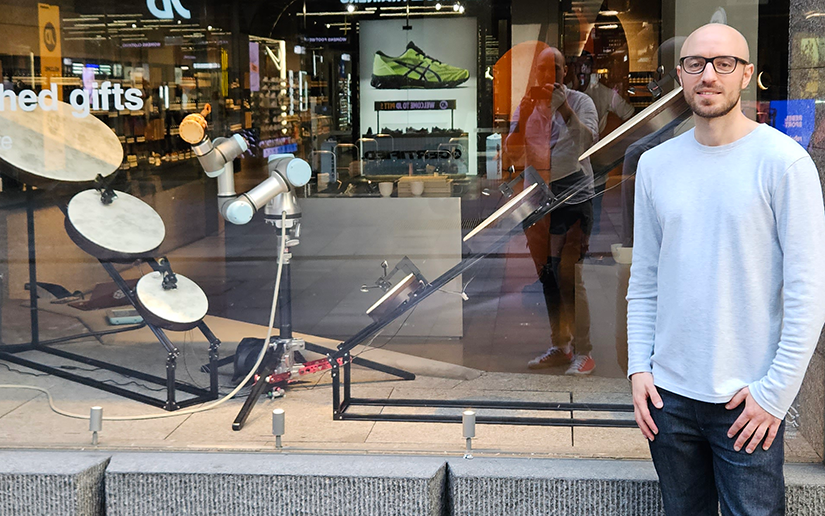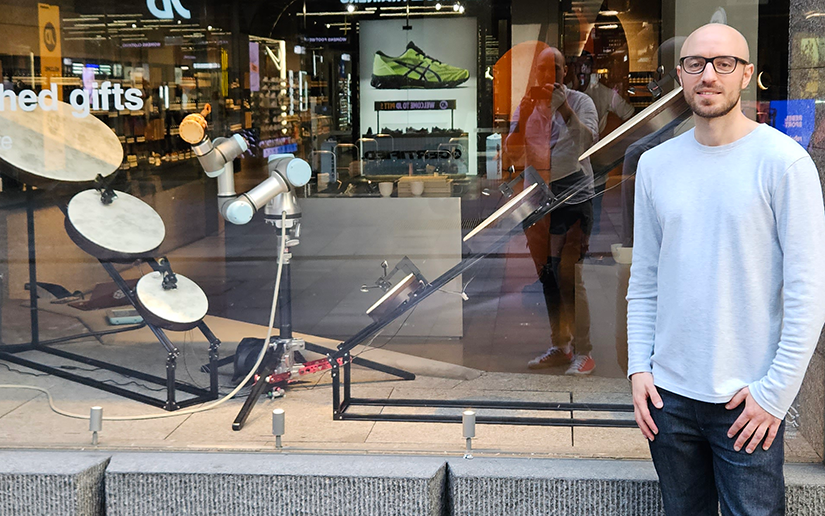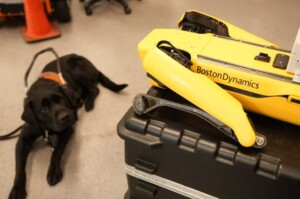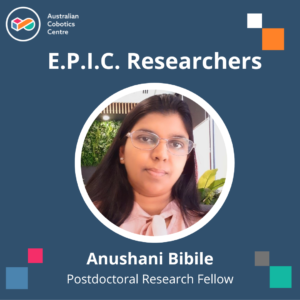 Anushani Bibile is a Postdoctoral Research Fellow, based at Swinburne University of Technology. Her project is part of the Quality Assurance and Compliance Program at the Australian Cobotics Centre. Her research is proactive in preserving the quality assurance of cobots in automated processes, where organisations can reap the benefits of cobot automation while minimising risks and maximising productivity.
Anushani Bibile is a Postdoctoral Research Fellow, based at Swinburne University of Technology. Her project is part of the Quality Assurance and Compliance Program at the Australian Cobotics Centre. Her research is proactive in preserving the quality assurance of cobots in automated processes, where organisations can reap the benefits of cobot automation while minimising risks and maximising productivity.
We interviewed Anushani recently to find out more about why she does what she does.
-
Tell us a bit about yourself and your research with the Centre?
I am proud to say that I was born in the town of Galle, nestled along the southwestern coast of beautiful Sri Lanka, having a huge cultural and historical significance. My bachelor’s degree was in Engineering Physics which I successfully completed with a first-class honour from the University of Colombo, Sri Lanka in 2004. I flew to UK to pursue my higher studies and completed my MSc in Mobile, Personal and Satellite Communications. After returning to my motherland, I served as a Lecturer at the Institute of Technology, University of Moratuwa, Sri Lanka from year 2009-2012. I taught the subjects Electronics and Telecommunications. I migrated to Australia with my family in 2013 and was offered the opportunity of a PhD from Monash University in 2015. I successfully completed my PhD in Engineering from the Department of Electrical and Computer Systems Engineering (ECSE) at Monash University. The research was based on signal processing for moving chipless RFID tag detection. I was privileged to contribute to the Monash, Microwave, Antennas, RF and Sensors (MMARS) team which pioneered this technology. After completing my PhD in 2020, I was working at Cylite optics, Clayton, as a researcher where I contributed towards the development of 3D registration algorithms for sparsely sampled OCT (Optical Coherence Tomography) retinal volume data, designed specifically for the anterior of the eye (cornea, lens, and iris). I joined Swinburne University of Technology as a Postdoctoral research fellow in 2022 and am presently the postdoctoral researcher for the Quality Assurance and Compliance research program at the Australian Cobotics Centre.
-
Why did you decide to be a part of the Australian Cobotics Centre?
I have been engaged in high end industrial projects throughout my doctoral research and have been able to publish journal papers in Q1 journals, conference papers and book articles. My research strengths were based on signal processing and data analysis. I decided to be part of Australian Cobotics Centre since I believed my experience in signal processing can be further utilized in a more real environment and it will be useful in bringing solutions to cobot associated manufacturing processes.
-
What project are you most proud of throughout your career and why?
One of the longest and interesting projects that I was involved in was the implementation of a UHF RFID based smart shopping trolley which can track products and provide item level information to consumers in real time. I was involved in each part of this project, while my biggest contribution was to implement the novel detection algorithm that I developed for moving chipless RFID tag detection into the RFID reader. I am proud to have been a part of this project as it was a low cost chipless RFID sensor which was presented to eliminate the current limitation of conventional RFID sensors and the optical barcode for item-level tagging which is a future 6G intelligent IOT application.
-
What do you hope the long-term impact of your work will be?
The integration of cobots enables the delegation of many human-based skill activities, with cobots able to undertake a range of repetitious tasks, whilst offering high flexibility and increased productivity. It is important to regularly review and update quality assurance protocols to keep pace with evolving technologies and changing workplace conditions. By remaining vigilant and proactive in preserving the quality assurance of cobots in automated processes, organisations can reap the benefits of cobot automation while minimising risks and maximising productivity. With my contribution to the quality assurance and compliance program of the Australian Cobotics Centre, I hope we will be able to make significant impact in achieving these standards in cobot automated processes.
-
Aside from your research, what topic could you give an hour-long presentation on with little to no preparation?
Research has been a fascinating part of my life, but aside from research there is life which we truly live and which brings joy to our lives. So, as a woman, a mother of 3 kids, a wife, a daughter, a sister, a friend, a teacher, and a child of God I can keep on talking about my life experiences ….no preparation needed!



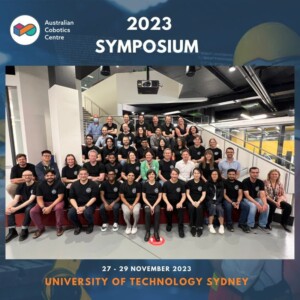

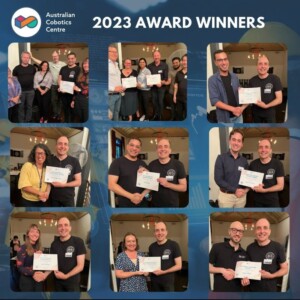

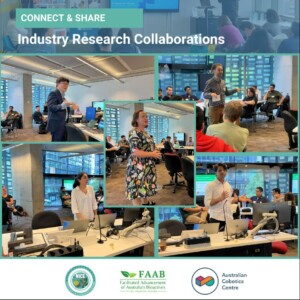

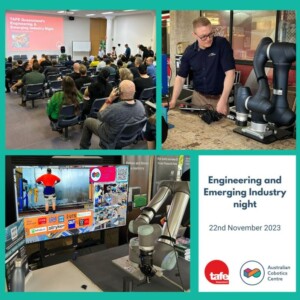

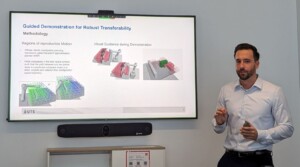
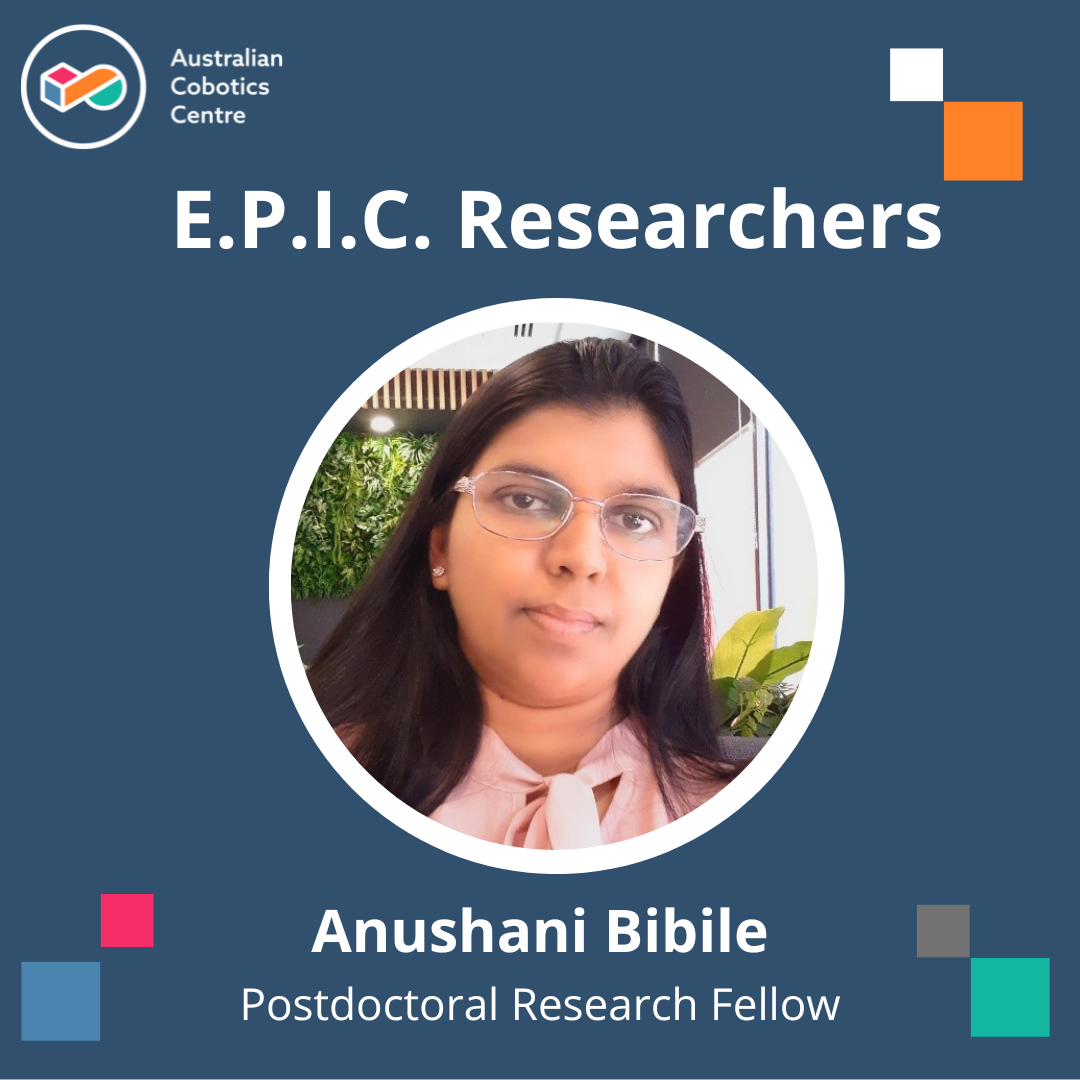
 Anushani Bibile
Anushani Bibile